When Will Vikings Be on Again
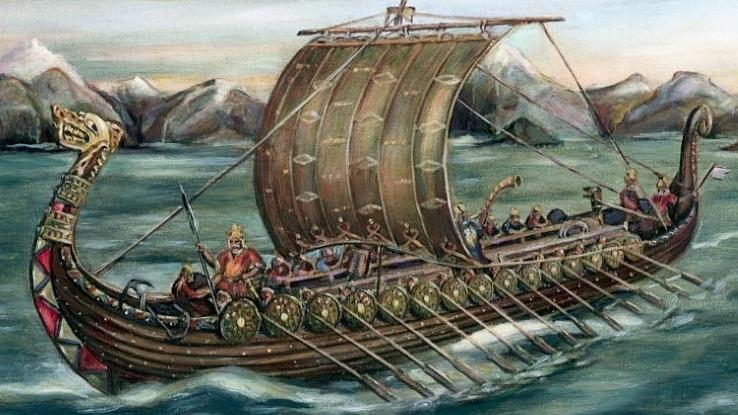
When you call back about Vikings, y'all probably don't think about skiing, good hygiene and gender equality. Instead, you probably imagine long beards, lots of physical brutality and barrels of booze. In short, all these things played a role in Viking society at one time.
As a civilization, Vikings were really much more complex than virtually people realize. In fact, much of their order paved the way for order today. You lot might be surprised to learn some of the bottom-known truths about how Vikings lived. Check out these 30 rare facts most the legendary Viking culture.
The Days of the Week Come from Viking Gods
Autonomously from Saturday, Sunday and Monday, the days of the week are named after Norse gods — the gods of the Vikings. The inspiration backside Tuesday, the Norse god Tyris is a god of war and the heavens (comparable to the Greek god Ares). Wednesday is named later Woden, supreme father of the Norse gods (also called Odin in some cultures).
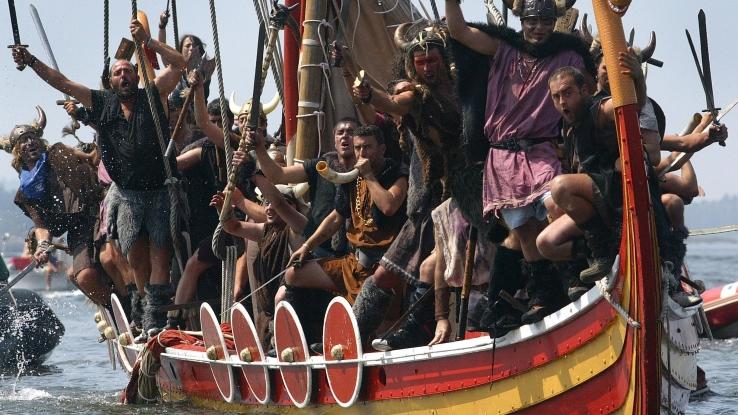
Thursday is based on Thor, the god of thunder, and Friday comes from Freya, the goddess of love and dazzler. It's an interesting twist to have most of the English days of the week derive from Viking culture.
They Weren't E'er Vikings
Historically, "viking" meant "pirate raid" in Erstwhile Norse. When Scandinavians went on their fell raids, it was referred to as "going viking." Throughout history, they went viking ofttimes and enjoyed substantial success. Eventually, Viking became a name used to refer to the Scandinavian warriors themselves.
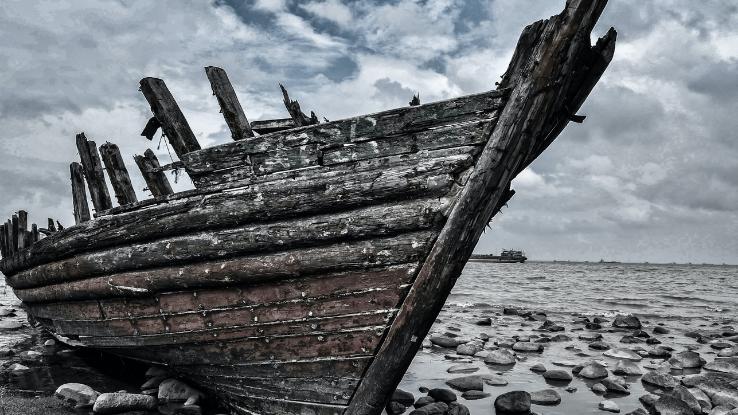
If you had met Vikings in the past, you would have called them Norsemen, Norse or Danes, merely never Vikings. Today, of grade, the name is common, and most people would probably mistakenly remember you lot were talking virtually Danish people if you referred to Danes.
Fact or Fiction: Horned Helmets
Yous probably imagine Vikings as burly men carrying heavy shields, big swords and axes and wearing impressive looking horned helmets. Go ready to be shocked: There is no testify to prove Vikings wore the iconic horned helmets you see on TV.
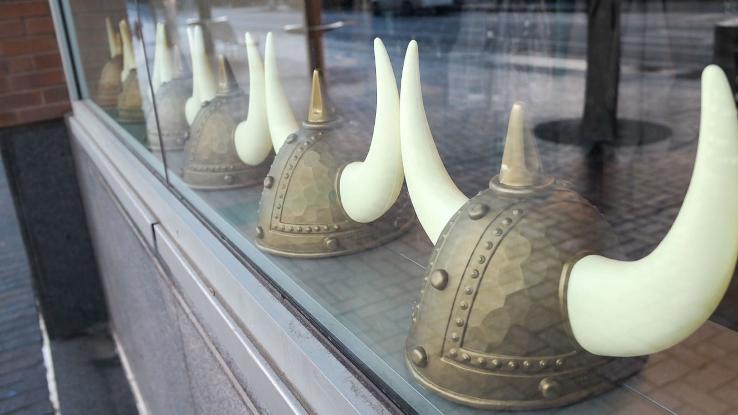
It's believed the false estimation originated with 19th-century paintings that depicted Vikings based on ancient descriptions from northern Europeans. Ancient Greeks and Romans often described Vikings in derogatory means, and these inaccurate references probable seeped into art created by professional painters. Centuries subsequently, people took these creative renditions as truth.
Sipping from the Skulls of Their Enemies
Vikings certainly weren't afraid to pillage and impale, but there's no historical proof they used the skulls of their victims as cups. The starting time evidence of a culture that drank from human bones actually came from a Greek historian, Herodotus, who wrote most Eurasian nomads who drank from skulls. Vikings can't accept credit for that gruesome chip of history.
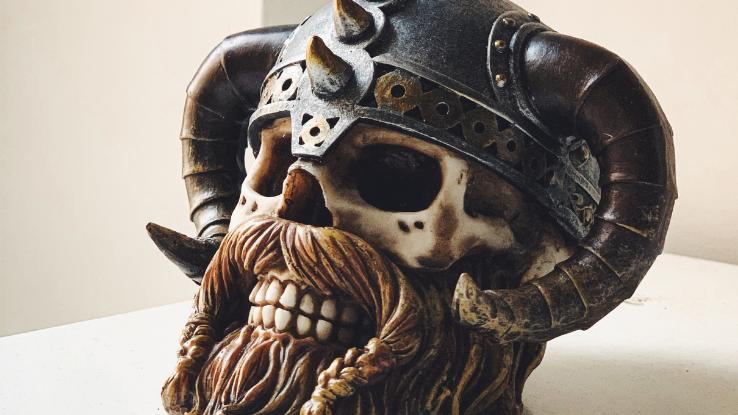
Vikings did beverage from horns (like the i pictured). With their many cattle, they e'er had an ample supply of horns to use as goblets. This may be the practice that started the skull-sipping rumor.
A Honey-Based Drink of Option
Vikings didn't drinkable from skulls, but they did like to drink. They didn't have grapes to make wine, but they had dearest, and they used information technology to make mead, a favorite fermented beverage of the time. It was a sweet, versatile drink that could be customized with spices like cloves, rosemary, ginger and thyme.
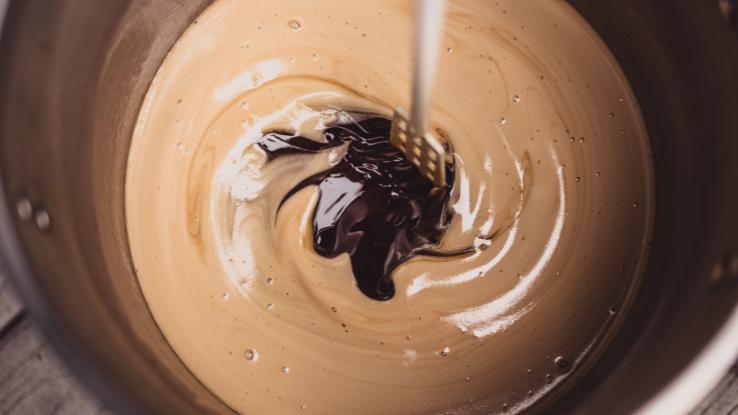
Vikings were crazy for mead — and not only because it got them drunkard. It also had a handful of health benefits, similar improving digestion, immunization and cleaning the blood — all cheers to the antibiotic components in honey.
No Demand to Concur Your Nose
With all the raiding and the drinking, you might remember Vikings would accept smelled like death. Incorrect. They had significantly higher hygiene standards than most other European societies at the time. The artifacts they left behind, including tweezers, combs, razors and even ear cleaners, serve every bit proof.
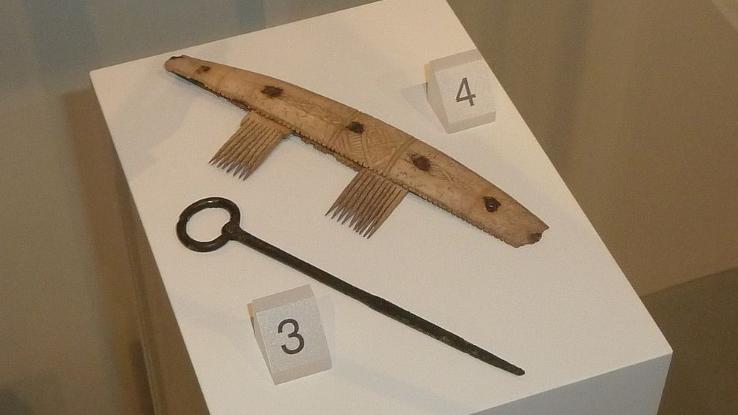
At that place is also evidence that Vikings washed in one case a week and engaged in frequent hot spring sessions. Compared to other ancient cultures, that qualifies them as downright clean freaks! Information technology certainly creates an understanding of what they valued.
Blondes Had More Fun
You may think of Vikings as large, brawny blondes, and this nugget of information has some connexion to the truth. They did covet blonde hair and find blondes most attractive, probably because the most common hair colors were brownish, cherry-red and black, and blondes were rare. If you were built-in blonde, you had instant admiration.
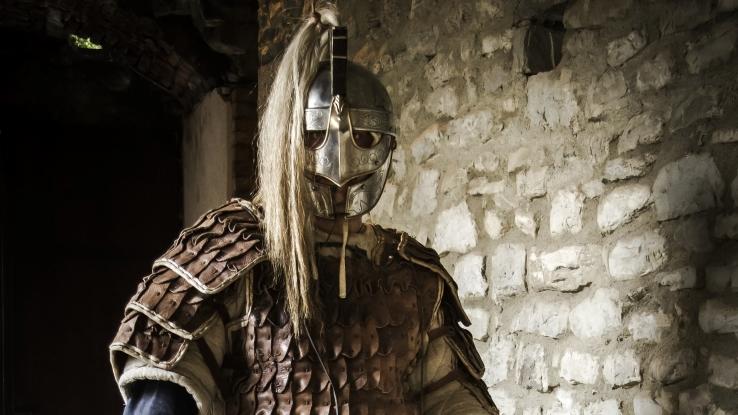
If Vikings didn't win the hair colour lottery, they sometimes used harsh lather with lye to lighten their hair, and information technology worked to a certain degree. Information technology also helped kill head lice, which further contributed to their good hygiene.
The Teeth Tell the Tale
Teeth carving, notching and ornament were status symbols in plenty of cultures throughout history. The Vikings evidently engaged in some of these practices, just archaeologists and anthropologists accept had a difficult time figuring out just what it meant. Skeletons were discovered with teeth notching that displayed a horizontal fifty-fifty filing, usually only seen in societies effectually the U.S. Great Lakes.
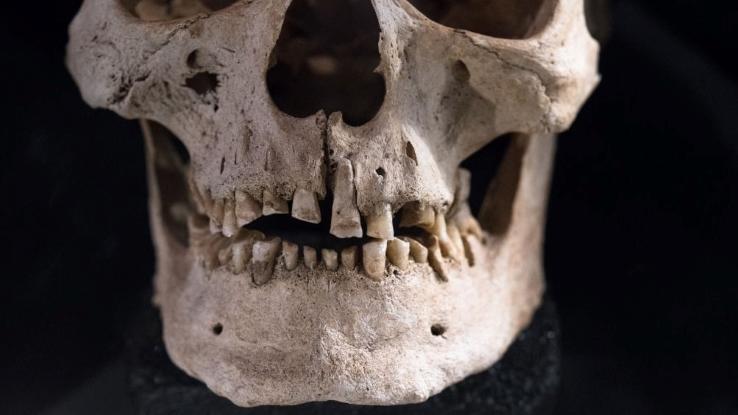
What did the notching mean for the Vikings? Some theories are that it represented an achievement or served as a fashion selection. Whatsoever the purpose, it was an interesting archaeological find.
Masters of the Water
On land, the Vikings were powerful, but in the water, they were virtually invincible. They had ships that were strong and resilient, and they knew how to navigate. Even when faced with thick fog, storms or poor visibility, the Vikings could withal manage to reach their destinations.
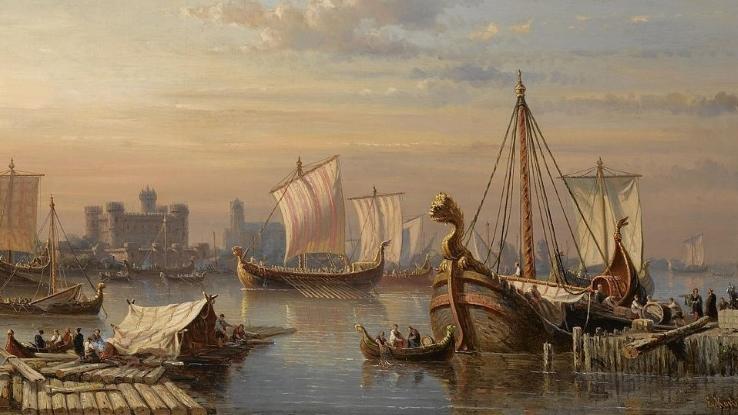
They e'er used the sun and stars to guide them, but it's also believed they used compasses. When these options weren't available, historians believe they used a sun-shadow lath. Thanks to their prowess on the seas, Vikings were able to travel to faraway lands and merchandise with distant civilizations.
Waging State of war with Women
Although it wasn't a mutual do, show exists that female warriors sometimes fought alongside men. I historian called these female person warriors "shieldmaidens," and confirmed they dressed equally men and trained as men in swordplay and battle. This information by and large comes from Viking texts and accounts from surrounding communities.
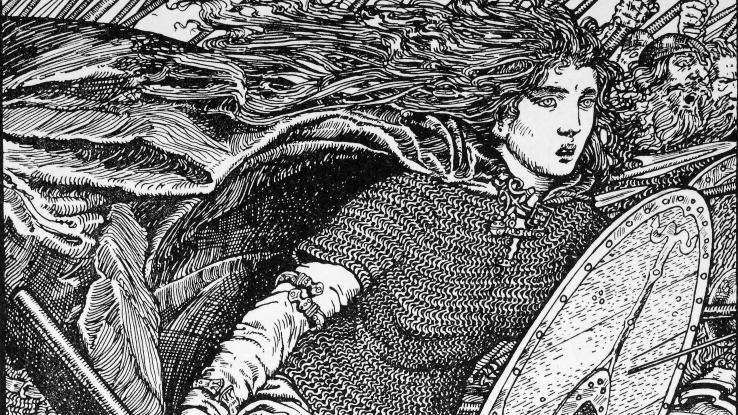
Some writings also refer to women who accompanied men on raids that were called Valkyries. (The term is likewise used for mythical warriors who helped the souls of dead soldiers enter Valhalla.) This sharing of the battlefield indicates Vikings practiced a certain amount of gender-equality — particularly when compared to other societies.
Dublin: The Viking Foundation
The Vikings really founded the Irish city of Dublin. They had established settlements in Canada and Republic of iceland, and they raided sites on the way to these settlements, including locations in Great United kingdom of great britain and northern ireland. Because of the frequent traveling back and forth, the Vikings decided to set posts.

In the early ninth century, they invaded Republic of ireland and created a postal service called Dyflin. It became a hot spot for trading and a stronghold in Ireland, eventually transforming into the city of Dublin throughout the years. The Vikings ruled the city for 300 years.
A History of Human Trafficking
The Vikings referred to their slave labor as "thralls," and they were forced to do farm and housework. Thralls were generally captured in Viking raids. As with the Greeks, Romans and Egyptians, the Vikings participated in human trafficking to detect workers and as a profitable venture.
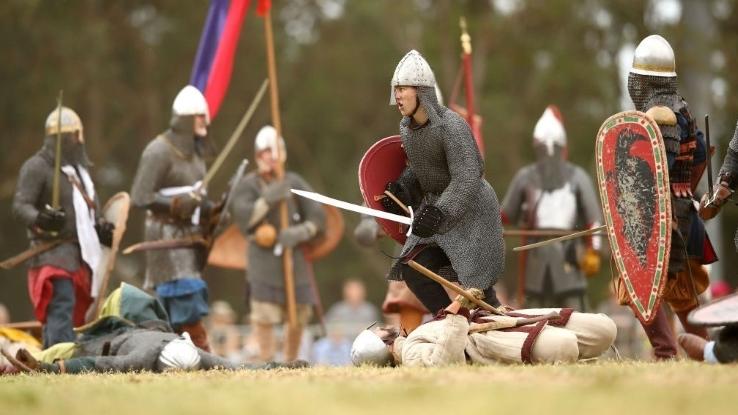
Thralls were commonly women and boys kidnapped from their homes in Northern Europe during raids. The Celtic, Slavic and Anglo-Saxon people were all popular targets for raids, merely any hamlet Viking gangs came across was fair game. A lot of Vikings got rich buying and selling laborers during this time.
Sick Children Were Given the Boot
Information technology's true that Vikings valued physical strength to a higher place all else. A lot of things in their guild depended on it, including raids, farming and sailing. Skillful health was necessary for a Viking to survive, and it was something they took seriously.
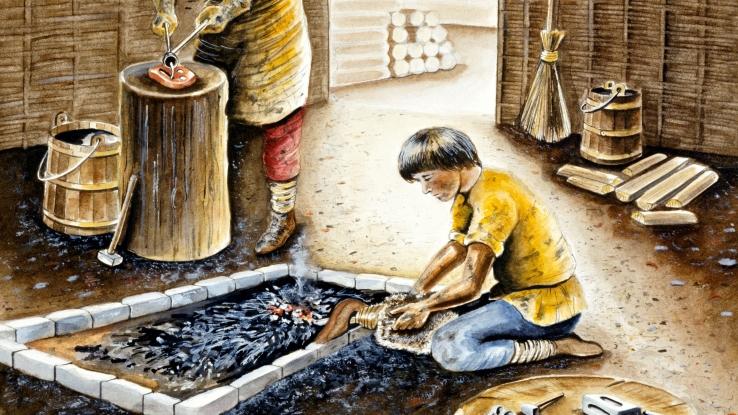
If children were born with defects or became ill, the Vikings would abandon them. Any condition that meant physical dependence on others was seen as unacceptable. This certainly wasn't a positive aspect about the Viking way of life, and it's a prime example of why they are seen as a cruel and ruthless civilisation.
Expanding the Boundaries for Merchandise
The Viking society depended on trading, and they were pioneers in the field. Many trade routes and connections were established because of the Vikings and wouldn't have developed without them. They are even believed to be the first Europeans to arrive in N America.
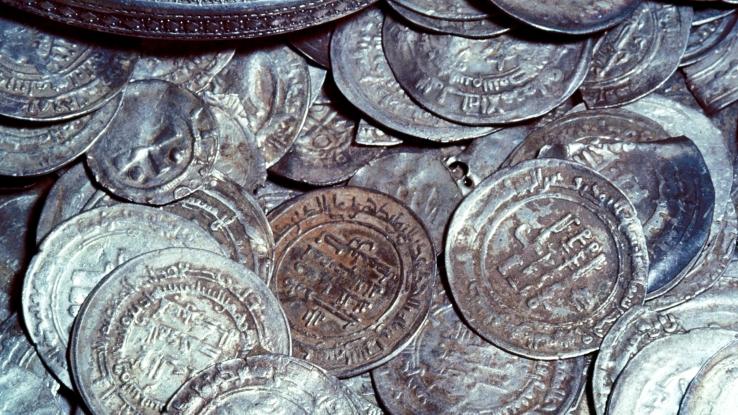
Viking burial sites take included items from incredible distances away, including Arab coins dated between 750 and 950 AD, silks from China and jewelry from Persia. The multifariousness of objects acquired past the Vikings reveals how complex their trading organization must accept been and how highly they valued it.
A Justice System That May Seem Familiar
If you think of Vikings equally brutal, you might exist surprised to acquire they handled justice in a similar style to the modern earth. Their culture established government and laws, and complimentary men gathered to create laws and make up one's mind cases. These gatherings were called tings, and they included a jury, a accused and a plaintiff.
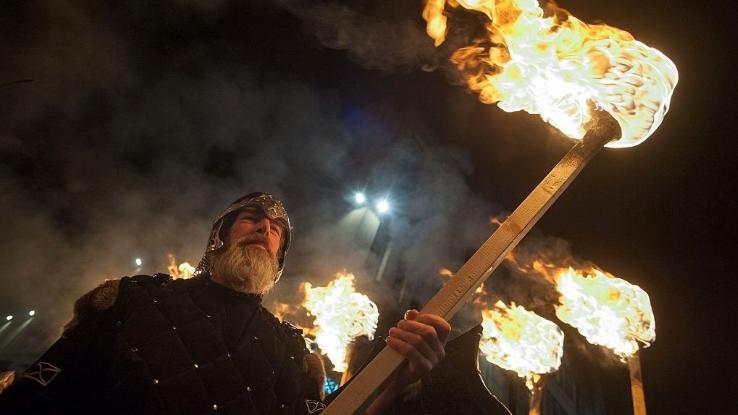
These groups of men likely came from powerful families, and guilty individuals were either fined or outlawed. If outlawed, their holding were forfeited to the customs, and they were banished forever without aid. In Viking times, banishment often meant decease.
Women Really Had Some Rights
Beyond the women immune on the battleground, what was life like for the women who stayed at home? Surprisingly, it was better than in almost societies at the time. Scandinavian Viking women had the right to enquire for a divorce and reclaim dowries in poor marriages, and they could own holding in their ain proper noun.
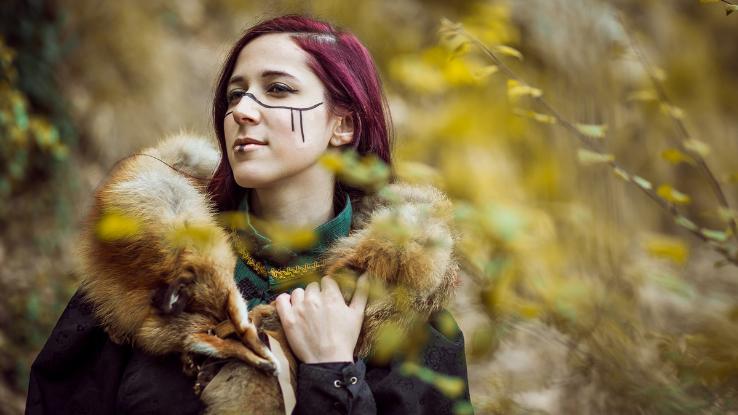
If a woman's married man died, she was expected to accept over his duties to support the family. This allowed her access to certain parts of society that women in other cultures would never have experienced and gave her economical opportunities that were unheard of for women.
They Beat Columbus to the Punch
It's believed that the true "discoverer" of N America was Leif Erikson, a Viking. If you've heard of Erik the Red, Leif Erikson was his son, and he supposedly stopped in North America while trying to travel to Greenland. He chosen the place he docked Vineland, which afterward became the area known equally Newfoundland.
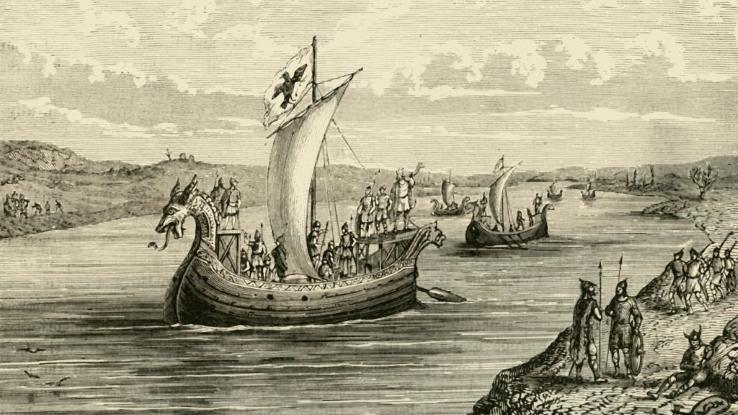
Legend has it that the land was beautiful and fertile, with grapes growing in affluence. Leif was more interested in raiding and trading, however, so he hopped right back on the boat and headed for home.
The Soup That Decided a Warrior's Fate
The Vikings had an interesting method for treating wounded warriors. Sometimes the women caring for them didn't know if they would survive. In these cases, they had a trick for determining if a wound was fatal.

The women cooked a soup of onions, leeks and other pungent herbs and fed information technology to injured warriors. Once the warriors ate the soup, the women checked the wounds to see if they could smell the soup through the wounds. No scent meant the warrior would survive. If the olfactory property of onions and herbs seeped out of the wound, however, it meant the warrior wouldn't make it.
Going Berserk on Purpose
It's no secret that the Vikings weren't afraid of a little bloodshed, but some were deliberately more barbarous than others. These men were called berserkers, and they were meant to exist feared. They seemed to experience no pain and would fifty-fifty bite on their shields. Their condition equally berserkers meant they wore bearskins and were blessed by the god of war and the heavens.
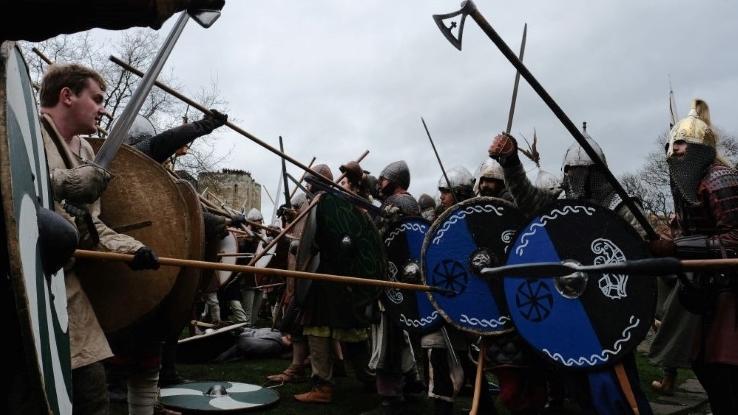
Their boxing frenzy was believed to ignite supernatural powers and aid them in battle. Historians today accept theorized that the men snacked on hallucinogenic mushrooms to work themselves into a hypnotic, murderous land.
Dial Back the Buff
Movies and television set promote the idea that Vikings were all broad-shouldered, thick-muscled, burly men who were larger than life. That fantasy isn't based on truth. Sure, the best raiders were probably very strong, but the bulk of the Norse were a mere 5-anxiety 7 inches to five feet 9 inches in height and built of lean muscle.
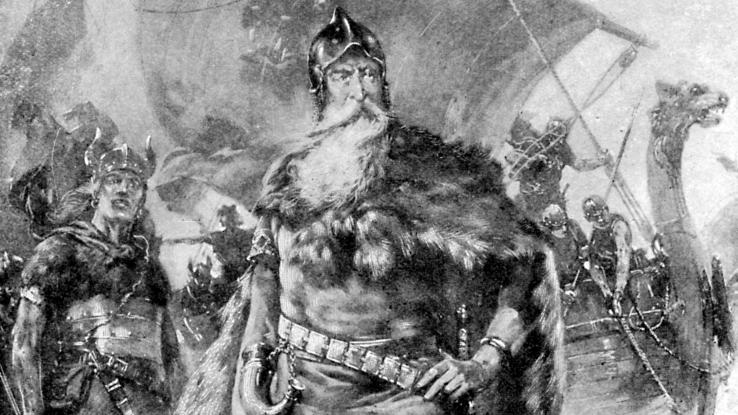
Non all Vikings engaged in raiding. Instead, nearly of them were humble farmers who spent their time in the fields. That ways you need to remember of the boilerplate Viking equally average size instead of as a hulky warrior.
Not Every Warrior Was Attack Burn
The pop concept of a Viking burial consists of strapping the body to a gunkhole, launching information technology out onto the water and shooting a flaming pointer to set it on fire. The Vikings didn't really practice this form of burial, at to the lowest degree not to a significant degree. Instead, they cached their dead with ships — if they had a high enough social ranking.
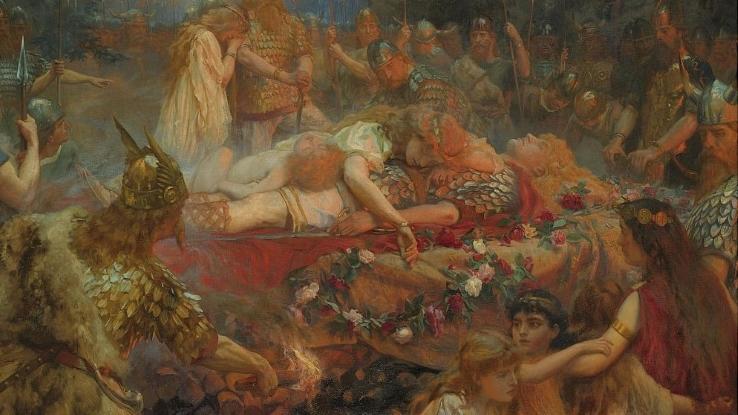
Of form, non simply anyone got that privilege. Not surprisingly for a seafaring culture, they placed a high value on their ships. They also believed the ships helped the expressionless attain the afterlife.
Marriage or Negotiation?
In the time of the Vikings, marriage was more of a negotiation than an act of honey. It was seen as a contract between ii people that connected them for life, and Viking women didn't want to get stuck with someone who wouldn't do well economically.
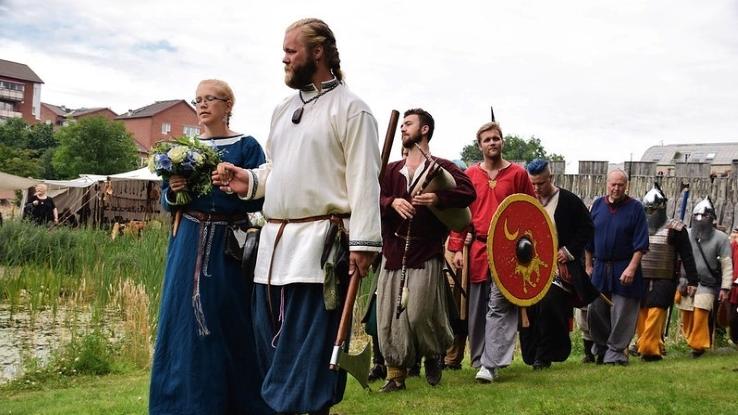
If two families agreed on a marriage between their children, the homo delivered a bride cost for the woman (who was usually betwixt 12 and fifteen years of age). The father of the helpmate paid the groom a dowry, and families would oftentimes negotiate — like a prenup! — what would happen should the couple divorce.
Mixing Things Up
Given all the traveling, raiding and trading the Vikings did, information technology's not surprising that the men often mingled with the local people they encountered. Viking men got around and may accept even taken women from faraway lands dwelling with them. National Geographic indicates DNA findings imply a Native American woman hitched a ride to Europe with Vikings. And this was all 500 years before Christopher Columbus.
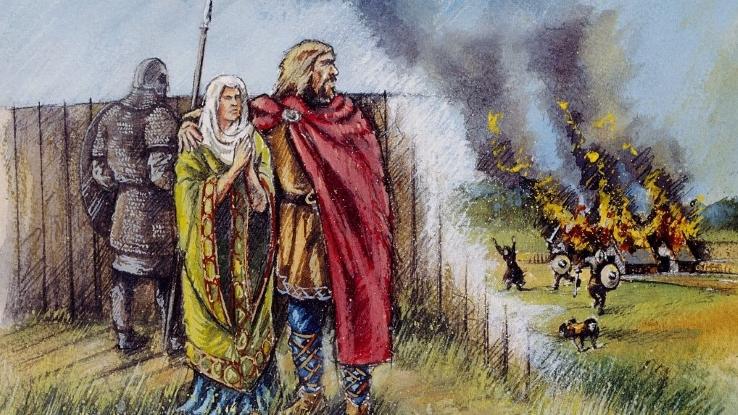
Information technology's hard to know how many foreign women traveled to Europe with Vikings, simply historians do know that Vikings intermarried with Celtic women in Republic of ireland. After all, the bounding main must get lonely at times.
They Weren't a United Nation
The Vikings didn't ever nowadays a united front as a people. Yes, there were tight-knit communities and circles of Vikings who were unified, only it was a patchwork of societies for the most part. Scandinavia was large, and there was never one state or one central ruler.
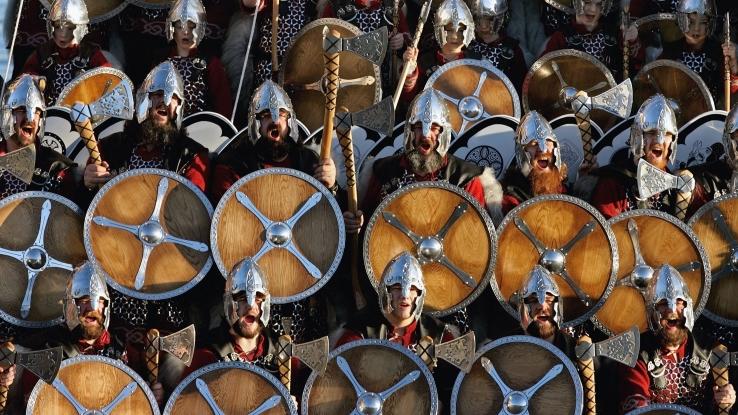
Instead, Vikings belonged to different tribes that were led by their own chief. Sometimes tribes encountered i another, and it often resulted in conflict and fighting. They were a pillaging society, so they didn't generally take well to outsiders. If they weren't raiding overseas, they were getting into scuffles with their neighbors.
Farming equally a Way of Life
Even though many Vikings lived for the thrill of pillaging, many more lived calmer lives on farms. They were more preoccupied with planting wheat, oats and barley than searching for new villages to plunder. Based solely on the numbers, the Norse were actually people of the country.
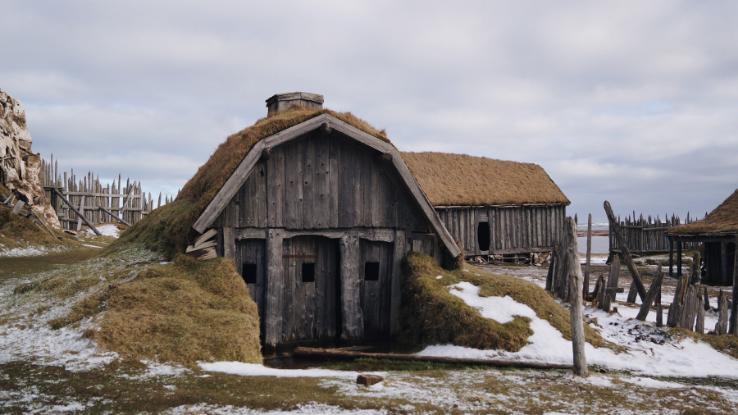
Norse farmers grew crops of cabbages, beans and onions and kept animals like chickens, pigs, geese, goats and sheep. This style of life wasn't every bit prone to drama and excitement every bit the seafaring life, which is probably why information technology doesn't become much attention in the movies.
They Played with Fire in Creative Ways
If you have ever tried to showtime your ain fire, you know it's not easy, even with modern inventions similar a lighter or a firestarter to get you lot going. The Vikings didn't have cheats and had to go artistic when it came to igniting a spark. Their musical instrument of choice was a type of mushroom (touchwood) that they allow eddy for a few days in urine.
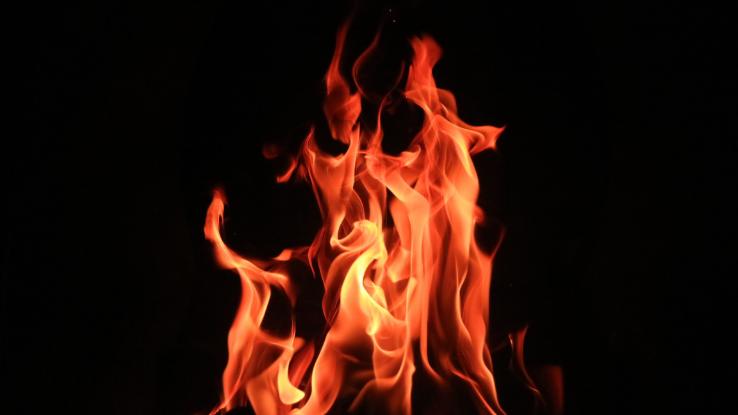
Yep, the Vikings used urine to meliorate their flames. The dried, urine-soaked mushrooms could be used to prolong the life of a fire, every bit the flames smoldered instead of burned.
Skiing as a Favorite Pastime
When the Vikings wanted to do something fun, they took to the hills for some skiing. It'south hard to Imagine a Viking on skis, but information technology was a common occurrence and didn't expect strange to the locals. They also used skis to get around in the snow. Trivia: The Viking god of skiing is named Ullr.
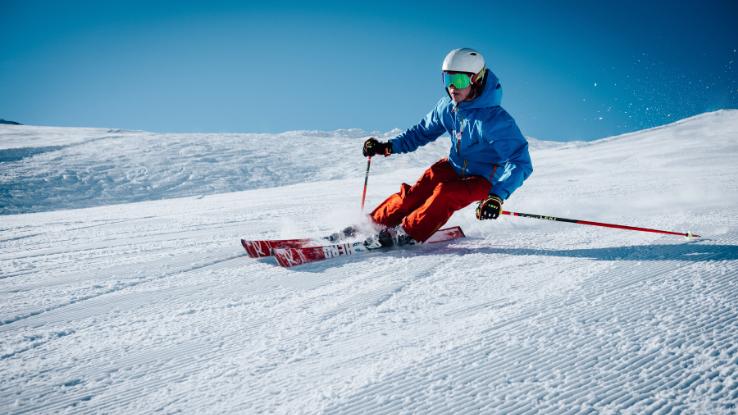
The Vikings yet weren't the first people to savor skiing. That credit goes to Russians, who are known to have used objects resembling skis as far back equally half-dozen,000 BC. Next fourth dimension you lot're on the slopes, think virtually a Viking sharing your hobby.
Sharing Rodents with the Residue of the World
Vikings aren't solely responsible for spreading house mice around the world, only they certainly played a central role. DNA enquiry reported by National Geographic institute a sequence that only belongs to mice that originated in Norway, the main region of the Vikings. Scientists connected the dots and determined Vikings helped deliver the critters to faraway lands on their ships.

Bear witness too suggests mice weren't the only animals on lath. Cats were popular ship companions, which could explain how Norwegian cats spread to other areas. They were also important figures in the home, as they kept those pesky mice under control.
The Valkyries Determined Their Fate
Female person warriors on the battlefield were sometimes called Valkyries, just the word also relates to an entire mythology. Norse mythology says that Valkyries were Odin'due south soldiers, and they are often depicted wearing chainmail and shields and covered in swan feathers.
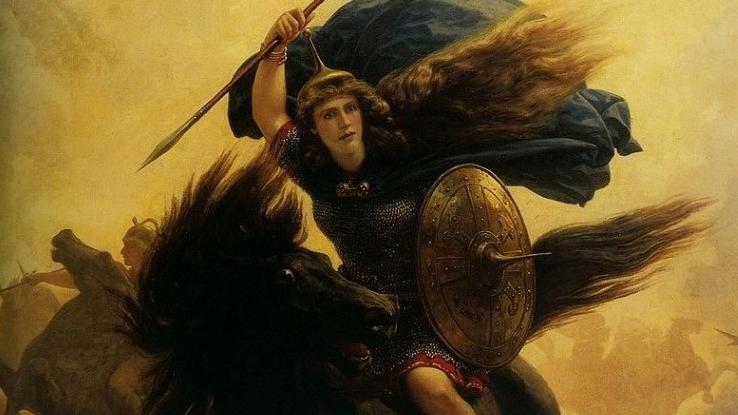
These women were the ones who cared for fallen warriors on the battlefield and decided their fates afterward death. Would the man get in to Valhalla, or would he be sent to Freya'south (the goddess of love and state of war) Folkvang field? Merely the Valkyries were allowed to decide, and but the fiercest and bravest men made information technology to Valhalla.
They Navigated Using Rocks
The way Vikings managed to navigate so well — fifty-fifty in low visibility — has always been somewhat of a mystery to historians. The Viking sun stone was kickoff mentioned in The Saga of King Olaf, but no i knew what it meant. In 1967, Danish archaeologist Thorhild Ramskou hypothesized that the sunday stones could be naturally occurring crystals in Scandinavia.
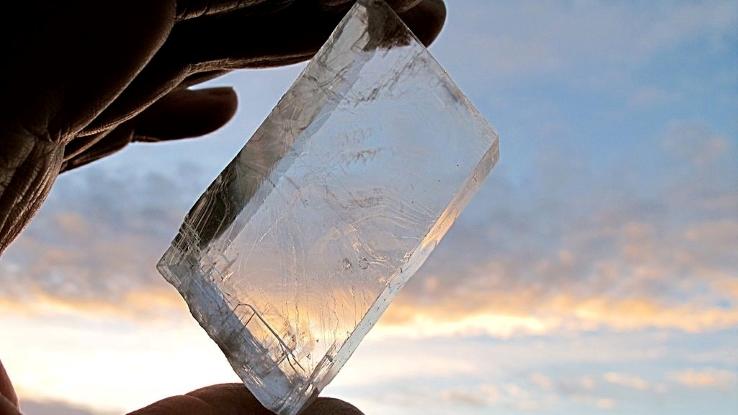
The hypothesis was tested in 2011 by using the Iceland spar crystal in navigation. Researchers discovered that when the crystal was held in the sky and rotated, the fashion it "polarized and depolarized the lite" formed a pattern that could point the location of the sun.
Source: https://www.ask.com/culture/unbelievable-facts-legendary-viking-culture?utm_content=params%3Ao%3D740004%26ad%3DdirN%26qo%3DserpIndex
0 Response to "When Will Vikings Be on Again"
Postar um comentário